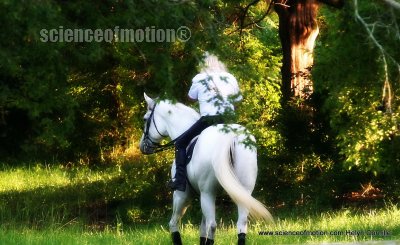Fundamental Difference
Horses
Fundamental Differences
Equine Biomechanics

Maya Angelou wrote, “I've learned that people will forget what you said, people will forget what you did, but people will never forget how you made them feel.” This applies to horses. You win their heart when you make them comfortable with their body and sound. You have a very special place in their mind when you encourage them to think and respect their errors. They never forgot when you treat them as partners. You can win their stomach with carrots, sugar, or any other treat but you don’t win their respect. It would be in fact more appropriated to use the word esteem. You can get a form of “respect” through domination or social order but it is more about submissive obedience. It is, for the horse, more a matter of survival than respect. They look in your pocket for treats but they don’t like you. They obey but don’t have any esteem for you. The ones who really look at you as a partner read your mind; they don’t need spectacular demonstration of love. “True friendship comes when silence between two peoples is comfortable.” (Dave Tyson Gentry)
There is a fundamental difference between a skilled rider and a master. A skilled rider makes the horse execute movements. A master gives to the horse the athletic ability to perform the move soundly and at its utmost potential. La Gueriniere was a true Master. He did not create the shoulder in to get a score in the show ring. Dressage tests were not part of the equestrian world at this time. François Robichon de la Gueriniere created the shoulder in to enhance the horses’ athleticism. There is no mastership without extensive understanding of the equine locomotor mechanism. Henri Pointcare wrote, “It is through science that we prove, but through intuition that we discover.” This is definitively true for the equestrian art. Most discoveries have been made first by intuition and proven later by science. There are also “intuitions” that have been proven to be wrong by science. True masters do not repeat false intuitions under the name of tradition. True masters question and analyze our predecessors finding in the light of actual knowledge.
Mastership is a long process of learning and experience. It cannot be replaced by extensive advertising. It is done but it is usurpation. Dennis Overbye wrote, “The Joy of Physics isn’t in the results, but in the search itself.” Riding is physics; it is about interactions of forces and consequent actions. The joy of riding and training and teaching is not in the execution of the movement; it is in the fascinating process of leading the horse’s brain toward the body coordination adapted to the athletic demand of the performance. With the science of motion, we are creating a generation of masters. You might never reach the experience, knowledge and fame that will make you a Master for the next generations, but you will be at your own level, a master in your horse’s heart and it is all that matters. Jean Luc Cornille 2014


 twitter
twitter facebook
facebook google
google pinterest
pinterest linkedin
linkedin